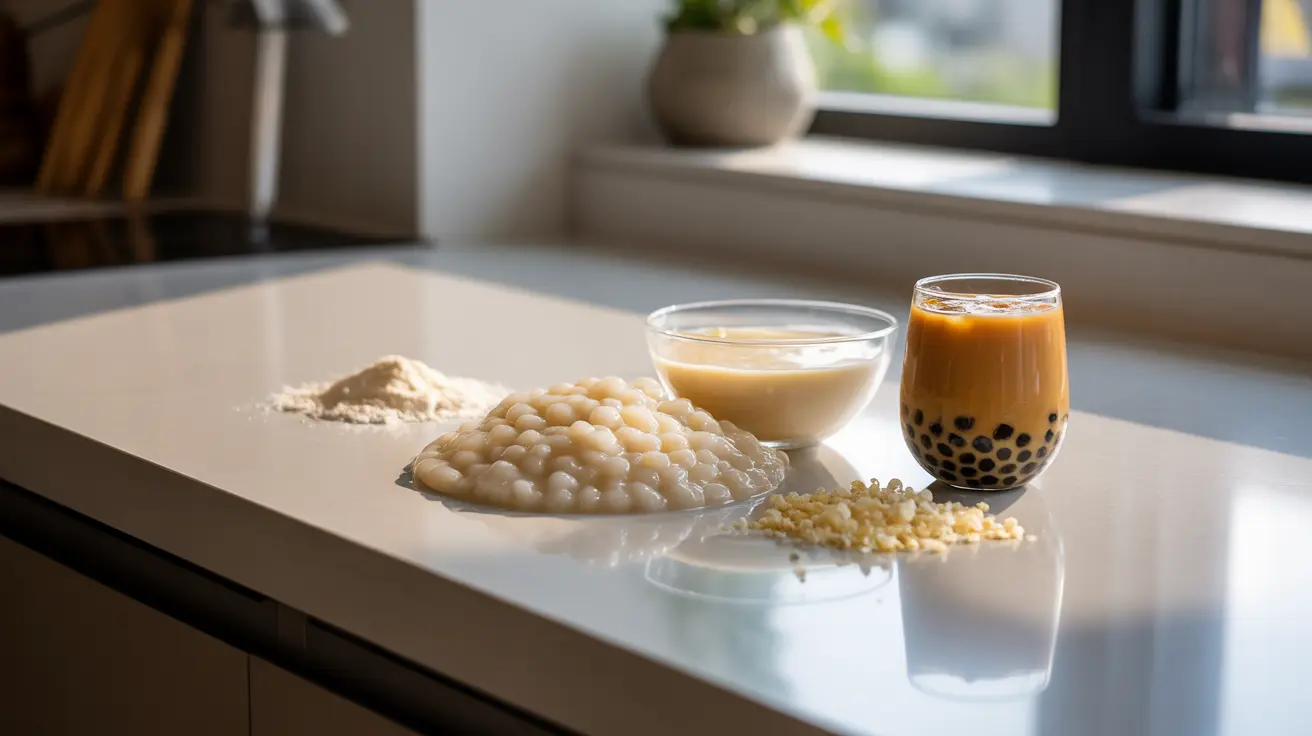Tapioca, a starch extracted from the cassava root, has gained popularity worldwide as a versatile ingredient in cooking and as a gluten-free alternative. This unique food product offers both benefits and considerations that deserve careful examination, particularly for those with dietary restrictions or health concerns.
Whether you've encountered tapioca in bubble tea, pudding, or as a thickening agent in various dishes, understanding its nutritional profile and potential health impacts can help you make informed decisions about incorporating it into your diet.
What Is Tapioca and How Is It Made?
Tapioca is derived from the cassava root (Manihot esculenta), a starchy tuber native to South America. The manufacturing process involves extracting and purifying the cassava root's starch, which is then processed into various forms including pearls, flour, and flakes. This transformation removes potentially harmful compounds found in raw cassava, making tapioca safe for consumption.
Nutritional Profile of Tapioca
Tapioca primarily consists of carbohydrates and contains minimal amounts of other nutrients. Here's what you should know about its nutritional content:
- Almost pure starch
- Very low in protein and fat
- Naturally free of gluten
- Low in calories per serving
- Contains minimal vitamins and minerals
- Low in fiber
Benefits of Consuming Tapioca
Gluten-Free Properties
One of tapioca's most significant advantages is its naturally gluten-free status, making it an excellent option for individuals with celiac disease or gluten sensitivity. It serves as a reliable alternative in gluten-free baking and cooking.
Easy Digestibility
Tapioca's simple starch composition makes it easily digestible for most people. This characteristic can be particularly beneficial for individuals with sensitive digestive systems or those recovering from digestive issues.
Common Uses in Cooking and Baking
Tapioca's versatility in the kitchen makes it a valuable ingredient for various culinary applications:
- Thickening agent for soups, sauces, and pie fillings
- Main ingredient in bubble tea pearls
- Base for puddings and desserts
- Binding agent in gluten-free baking
- Component in some grain-free flour blends
Potential Health Considerations
While tapioca offers several benefits, there are important health considerations to keep in mind:
Blood Sugar Impact
Due to its high starch content and minimal fiber, tapioca can cause rapid blood sugar spikes. Individuals with diabetes or those monitoring their blood sugar levels should consume it in moderation and as part of balanced meals.
Limited Nutritional Value
Tapioca's primary limitation is its minimal nutritional content. It provides energy through carbohydrates but lacks significant amounts of protein, fiber, vitamins, and minerals.
Frequently Asked Questions
What are the health benefits and risks of consuming tapioca?
Benefits include being gluten-free, easily digestible, and versatile in cooking. Risks involve potential blood sugar spikes and limited nutritional value. It's best consumed as part of a balanced diet that includes nutrient-rich foods.
Is tapioca a good option for people with celiac disease or gluten intolerance?
Yes, tapioca is an excellent option for people with celiac disease or gluten intolerance as it's naturally gluten-free and provides a safe alternative for baking and cooking.
How does tapioca compare to other gluten-free flours in terms of nutritional value?
Tapioca generally contains fewer nutrients compared to other gluten-free flours like quinoa or almond flour. While it's an excellent binding agent, it should be combined with more nutritious flours for better nutritional balance.
What are some common uses of tapioca in cooking and baking?
Tapioca is commonly used as a thickening agent in sauces and puddings, as bubble tea pearls, in gluten-free baking, and as a binding agent in various recipes. Its neutral taste makes it versatile across many applications.
Are there any potential downsides to consuming tapioca regularly, particularly for those monitoring their blood sugar levels?
Regular tapioca consumption can lead to blood sugar spikes due to its high starch content and low fiber. People monitoring their blood sugar should limit their intake and combine it with protein and fiber-rich foods to moderate its glycemic impact.




